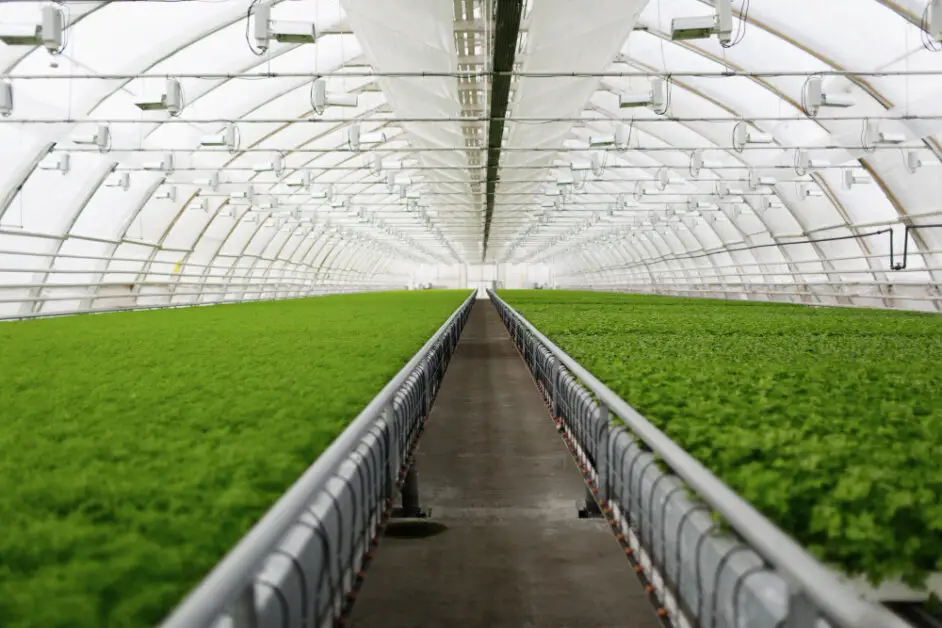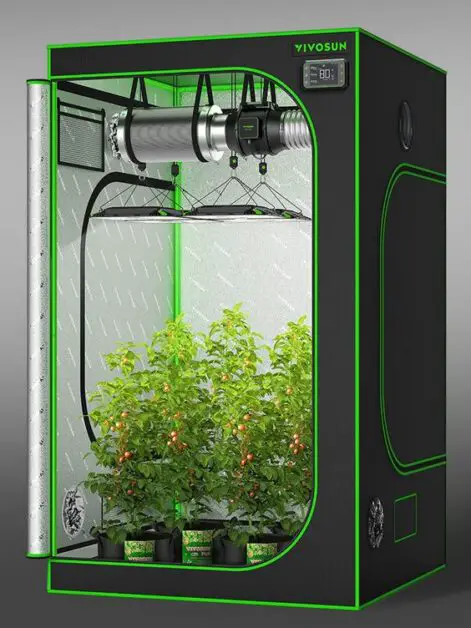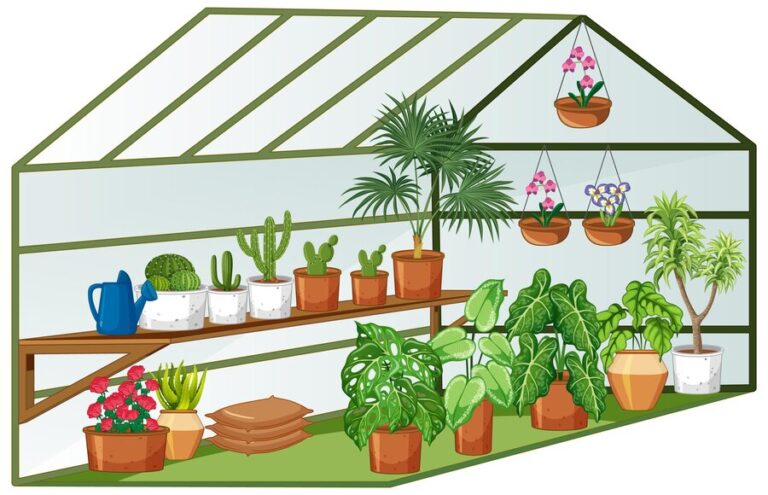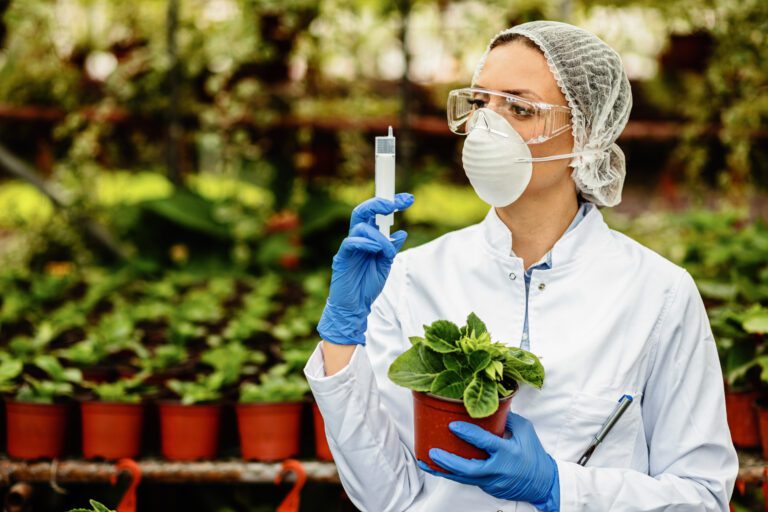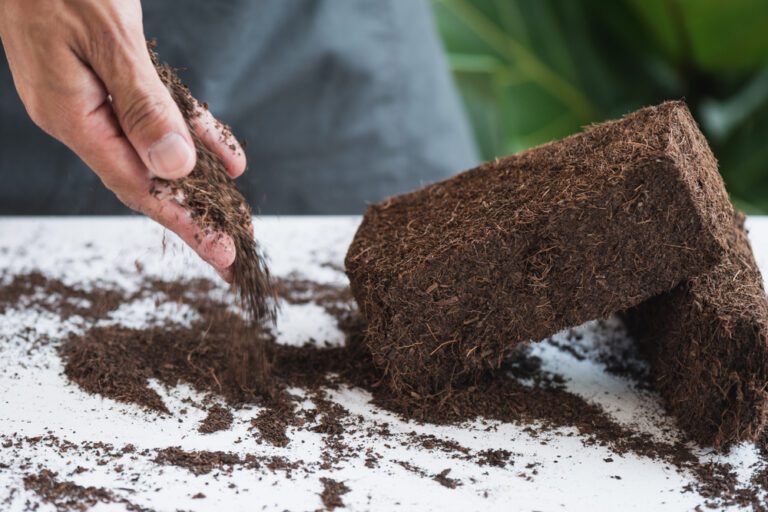The Ultimate Guide to Choosing the Best Hydroponic Growing Medium
Understanding the Importance of Hydroponic Growing Mediums
Hydroponic growing mediums play a crucial role in the success of any hydroponic system. Unlike traditional soil-based gardening, hydroponics relies on a soilless growing medium to provide support and deliver essential nutrients to the plants. The choice of growing medium is of paramount importance as it directly impacts nutrient absorption, water retention, aeration, and overall plant health.
The primary purpose of a hydroponic growing medium is to provide a stable foundation for the plant roots to anchor and grow. It acts as a carrier for water and nutrients, ensuring that they are readily available to the plants whenever needed. Additionally, the growing medium should have sufficient porosity and drainage capacity to prevent waterlogging and allow for proper oxygenation of the roots. A well-balanced hydroponic growing medium promotes healthy root development, leading to robust plant growth and increased yield. Therefore, it is essential to carefully evaluate different types of growing mediums and choose the one that best suits the specific needs of your plants and hydroponic setup.
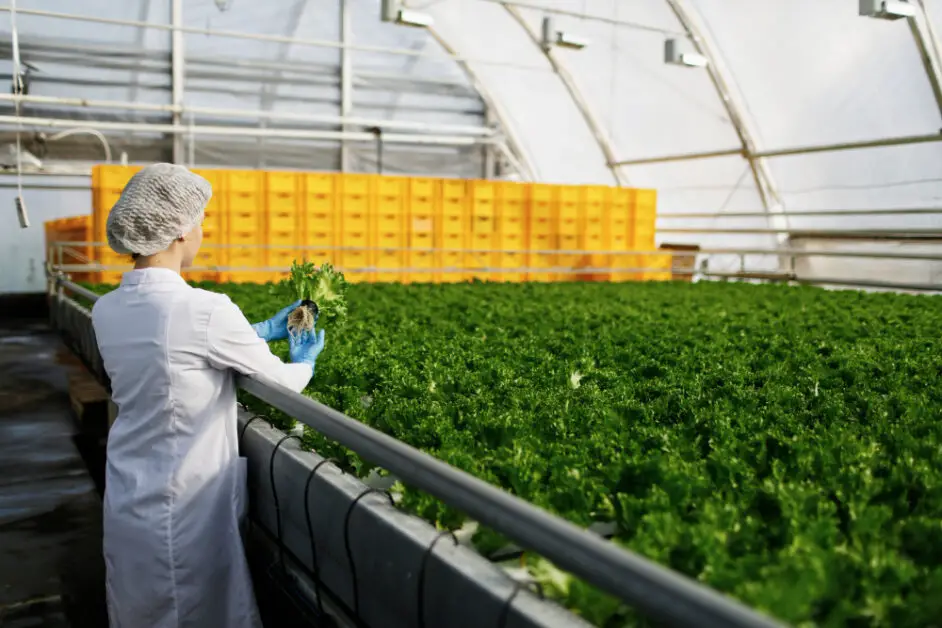
Exploring Different Types of Hydroponic Growing Mediums
Hydroponic growing mediums play a crucial role in the success of any hydroponic system. These mediums act as a support system for the plants, providing stability and anchorage, while also facilitating the delivery of essential nutrients, water, and oxygen. There are various types of hydroponic growing mediums available, each with its own unique set of characteristics and advantages.
One commonly used hydroponic growing medium is coco coir. Made from the fibrous husk of coconut shells, coco coir is known for its excellent water retention capabilities, allowing plants to access moisture for longer periods between watering. Additionally, coco coir has a naturally neutral pH level, making it suitable for a wide range of plant species. Its high porosity promotes good aeration, ensuring that the roots receive an adequate supply of oxygen. Coco coir is also a sustainable option, as it can be reused multiple times before being composted. Overall, coco coir is a versatile and widely favored hydroponic growing medium.
Another popular choice is perlite, a lightweight volcanic rock that is processed to form a porous, white substance. Perlite is highly porous and provides excellent water drainage, preventing water-logging and ensuring that the roots have access to oxygen. It also does not compact or break down over time, allowing for long-term use. However, it is important to note that perlite has a neutral pH level and does not have any inherent nutrient content, so it is often mixed with other mediums or supplemented with nutrients. Perlite, with its superior drainage properties and durability, is a reliable choice for hydroponic systems.
Here are some of the hydroponic mediums and their adnavtages and disadvantages:
| Growing Medium | Advantages | Disadvantages |
|---|---|---|
| Coconut Coir | pH-neutral, excellent water drainage properties | Can be challenging for the roots of shallow-rooted plants |
| Perlite | Lightweight, good drainage | Can float to the surface of the water |
When selecting a hydroponic growing medium, it is crucial to consider factors such as water retention, aeration, pH balance, and durability. Each medium has its own unique properties, catering to different plant needs and system requirements. By understanding the characteristics of different hydroponic growing mediums, growers can make informed decisions and create optimal conditions for plant growth and development.
Evaluating the Role of Nutrient Absorption in Hydroponic Growing Mediums
Hydroponic growing mediums play a crucial role in facilitating nutrient absorption in hydroponic systems. Unlike traditional soil-based gardening, where plants obtain nutrients from the soil, hydroponic plants rely on their growing medium to absorb essential elements directly from the nutrient solution. The growing medium acts as a conduit, allowing the roots to access the necessary nutrients and water required for optimal growth and development.
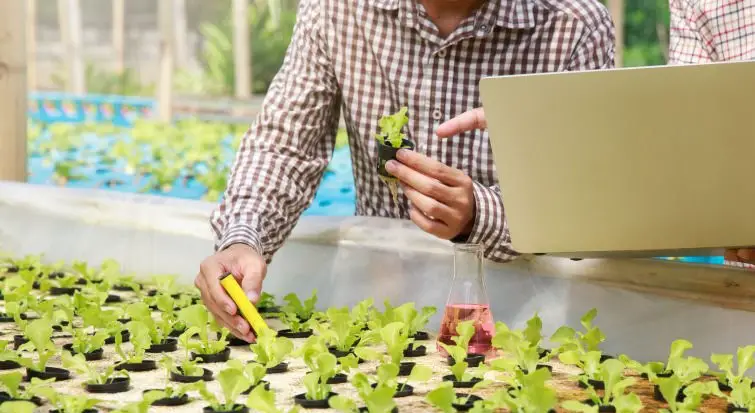
The ability of a hydroponic growing medium to efficiently absorb and retain nutrients is a determining factor in the success of the system. It is essential to choose a growing medium that can provide a stable environment for nutrient absorption, ensuring that the plants receive adequate nourishment throughout their growth cycle. Additionally, the growing medium should have a balance between water retention and drainage properties to prevent waterlogging and root rot. By carefully selecting the right growing medium, hydroponic gardeners can create an environment where plants have access to a steady supply of nutrients, resulting in healthier, more productive crops.
Analyzing the Water Retention Capacity of Hydroponic Growing Mediums
Hydroponic growing mediums play a crucial role in the success of a hydroponic system, and one key factor to consider is their water retention capacity. The ability of a growing medium to retain water is vital as it directly affects the hydration and nutrient availability to the plants.
Different types of hydroponic growing mediums vary in their water retention capacity. For instance, coconut coir, a popular medium among hydroponic gardeners, has excellent water holding capacity, allowing it to retain moisture while still providing sufficient oxygen to the roots. On the other hand, materials like clay pebbles are known for their low water retention capacity, which promotes excellent drainage and prevents waterlogging.
Understanding the water retention capacity of hydroponic growing mediums is essential for gardeners to optimize plant growth and prevent issues such as root rot. By choosing a suitable medium based on the specific water requirements of the plant species being cultivated, growers can maintain an ideal balance of moisture and aeration for healthy plant development. Additionally, factors like the frequency and duration of watering can be adjusted according to the medium’s water retention capacity, providing precise control over the hydroponic system and achieving optimal growth conditions for the plants.
Considering the pH Balance in Hydroponic Growing Mediums
Maintaining the proper pH balance in hydroponic growing mediums is crucial for the successful cultivation of plants. pH, which stands for “potential of hydrogen,” is a measurement of the acidity or alkalinity of a solution. In a hydroponic system, the pH level directly impacts the availability of essential nutrients for plant uptake.
Most plants prefer a slightly acidic to neutral pH range, typically between 5.5 and 6.5. This range allows for optimal nutrient absorption and promotes healthy root development. When the pH of the growing medium deviates from this range, nutrient deficiencies or toxicities may occur, leading to stunted growth and decreased yields.
To maintain the ideal pH level, regular monitoring and adjustments are necessary. Various factors can influence pH, such as the type of growing medium used, the water source, and the nutrient solution. It is important to note that different plants have specific pH preferences, so it’s essential to research and understand the requirements of the crops you plan to grow.
Hydroponic growers have several methods for adjusting pH levels. The most common approach is using pH adjustment solutions, such as pH up or pH down, to raise or lower the pH, respectively. These solutions contain acidic or alkaline substances that help achieve the desired pH range. It is essential to follow manufacturer instructions and gradually adjust the pH to avoid rapid and drastic changes that could stress the plants.
In addition to using pH adjustment solutions, growers can also consider using pH stabilizing products, such as buffering agents, that help maintain a stable pH over time. These products can be particularly beneficial in systems where pH fluctuations are common, ensuring a more consistent growing environment for the plants.
Remember, achieving and maintaining the correct pH balance is a fundamental aspect of successful hydroponic cultivation. By monitoring and adjusting pH levels appropriately, growers can optimize nutrient absorption, promote healthy plant growth, and ultimately achieve bountiful harvests.
Here is the table that shows how different pH levels can affects the hydroponic medium and the plant
| pH Level | Effect on Plants |
|---|---|
| 4.0-5.0 | Toxic to most plants |
| 5.1-5.5 | Ideal for acid-loving plants |
| 5.5-6.0 | Ideal for most plants |
| 6.1-6.5 | Ideal for alkaline-loving plants |
| 6.6-7.5 | Toxic to most plants |
Assessing the Aeration and Oxygenation Properties of Hydroponic Growing Mediums
Aeration and oxygenation are crucial factors in hydroponic growing mediums as they directly impact the health and growth of plants. Adequate oxygenation ensures the proper functioning of roots, allowing for nutrient uptake and overall plant vitality. It also helps prevent the development of anaerobic conditions, which can result in root rot and hinder plant growth.
When assessing the aeration and oxygenation properties of hydroponic growing mediums, several characteristics must be considered. Firstly, the porosity of the medium plays a vital role in determining the amount of oxygen available to the roots. A medium with high porosity allows for proper air circulation and oxygen diffusion, facilitating optimal root respiration. Additionally, the size and distribution of pores within the medium can significantly affect aeration. Smaller pores may restrict air movement, limiting oxygen availability to the roots.
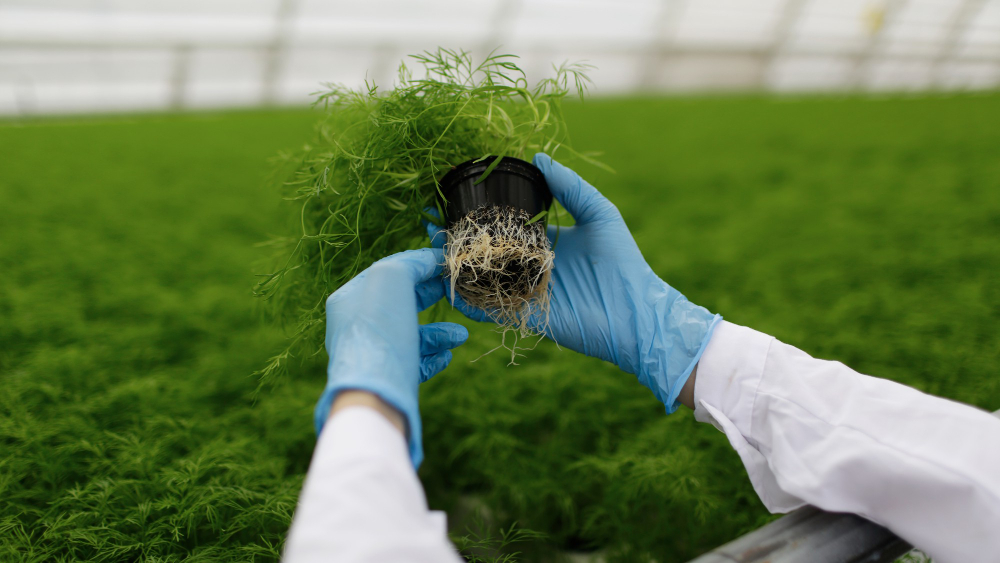
Moreover, the water-holding capacity of the growing medium directly influences its oxygenation properties. While water is necessary for nutrient absorption, excessive water retention can lead to oxygen deprivation. A balance must be struck between water retention and aeration to ensure a healthy environment for the roots. Mediums with good drainage characteristics promote oxygen diffusion and prevent waterlogging, allowing roots to thrive.
Examining the Durability and Reusability of Hydroponic Growing Mediums
As hydroponic gardening continues to gain popularity, understanding the durability and reusability of hydroponic growing mediums becomes crucial. One of the key advantages of hydroponic systems is the ability to reuse growing mediums, creating a more sustainable and cost-effective approach to cultivation.
The durability of a hydroponic growing medium refers to its ability to withstand constant watering, nutrient absorption, and plant root activity without degrading over time. Durability is an important factor to consider, as a strong and long-lasting medium ensures the stability and support necessary for the plants to thrive. Additionally, a durable medium allows for multiple crop cycles, maximizing its efficiency and minimizing waste.
Reusability is another critical aspect to explore when it comes to hydroponic growing mediums. By reusing the same medium for multiple crop cycles, gardeners can not only reduce their environmental impact but also save on costs associated with purchasing new mediums for each planting cycle. However, it is vital to note that not all growing mediums have the same reusability potential. Some mediums may break down or lose their efficacy over time, requiring replacement more frequently. Therefore, choosing a medium that is both durable and reusable ensures a more efficient and sustainable hydroponic system.
Comparing Organic and Synthetic Hydroponic Growing Mediums
Organic and synthetic hydroponic growing mediums are commonly used in hydroponic systems, each offering its own unique set of benefits and considerations. When comparing these two types of growing mediums, it is important to take into account factors such as nutrient availability, sustainability, and pH stability.
Organic growing mediums, which include materials like coconut coir, peat moss, and compost, offer a more natural and environmentally friendly option for hydroponic gardening. These mediums are derived from organic matter, making them renewable and sustainable. Additionally, organic mediums tend to have a better water-holding capacity, ensuring that plants have a consistent supply of moisture. This can be particularly beneficial in drought-prone areas or for plants with high water requirements.
On the other hand, synthetic growing mediums, such as rockwool and perlite, are engineered to provide a stable and consistent environment for plant roots. These mediums are manufactured from inorganic materials and are designed to be sterile and free from pests and diseases. They often have excellent drainage properties, preventing waterlogging and the risk of root rot. Synthetic mediums are also known for their longevity and reusability, making them a cost-effective choice for long-term hydroponic gardening.
Each type of growing medium has its strengths and weaknesses, and the choice between organic and synthetic comes down to personal preference, available resources, and the specific needs of your plants. By carefully considering the characteristics of both options, you can select the growing medium that best suits your hydroponic system and maximizes the growth and productivity of your plants.
Decoding the Verdict on Soilless Hydroponic Growing Mediums
Soilless hydroponic growing mediums have gained increasing popularity among gardening enthusiasts for their unique benefits and advantages in plant cultivation. Unlike traditional soil-based methods, soilless mediums offer precise control over nutrient delivery, pH balance, and overall plant health. This has led to a growing interest in understanding the verdict on soilless hydroponic growing mediums and their efficacy in various gardening settings.
One of the key factors in decoding the verdict on soilless hydroponic growing mediums is their ability to provide an optimal environment for plant roots to thrive. These mediums, such as coco coir, perlite, rockwool, and clay pebbles, ensure sufficient aeration and oxygenation, allowing roots to access the necessary oxygen they need for growth. Additionally, soilless mediums offer excellent water retention capabilities, preventing over-watering and root rot, which can be common issues in traditional soil-based gardening.
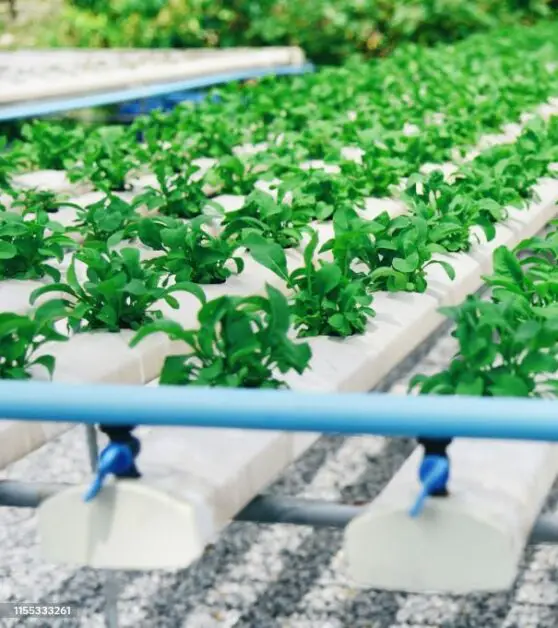
Moreover, soilless hydroponic growing mediums offer versatility and reusability, making them a sustainable choice for environmentally conscious gardeners. Many of these mediums can be reused across multiple growing cycles, reducing waste and minimizing environmental impact. This factor, coupled with their availability in both organic and synthetic options, allows gardeners to choose the most suitable medium for their specific needs and preferences.
In the following sections, we will delve into the specific characteristics, pros, and cons of popular soilless hydroponic growing mediums, providing a comprehensive analysis of their effectiveness in hydroponic plant cultivation.
Unveiling the Pros and Cons of Coco Coir as a Hydroponic Growing Medium
Coco coir, derived from the fiber of coconut husks, has gained significant popularity as a hydroponic growing medium. Its unique properties make it a suitable alternative to traditional soil-based mediums. One of the major advantages of using coco coir is its excellent water retention capability. This fibrous material can hold up to 10 times its weight in water, ensuring that plants have a constant supply of moisture. Furthermore, coco coir promotes aeration within the root zone, allowing for the efficient exchange of oxygen. This prevents the roots from becoming waterlogged and helps maintain a healthy root system.
Another advantage of coco coir is its sustainability and environmental friendliness. Unlike peat moss, which is often used as a soil amendment, coco coir is a renewable resource and does not deplete natural peat bogs. Additionally, coco coir can be easily reused and recycled, reducing waste and contributing to a more sustainable gardening practice.
However, it is important to note that coco coir has its limitations. One of the main concerns is its high salt content, which can adversely affect plant health if not properly managed. It is crucial to carefully rinse and pre-treat coco coir before use to remove excess salts. Additionally, coco coir tends to have a slightly acidic pH, which may require adjusting to ensure optimal nutrient uptake by plants.
As with any growing medium, the choice to use coco coir in hydroponics should be based on the specific needs and preferences of plants, as well as the grower’s expertise. Conducting thorough research and seeking advice from experienced gardeners or horticulturists can help make an informed decision when considering coco coir as a hydroponic growing medium.
Understanding the Benefits and Limitations of Perlite in Hydroponics
Perlite, a popular hydroponic growing medium, offers numerous benefits and a few limitations when used in hydroponic systems. One of the main advantages of perlite is its exceptional drainage properties. Due to its porous nature, perlite allows excess water to drain away, preventing waterlogging and the subsequent risk of root rot. This quality not only promotes healthy root development but also ensures that important nutrients are delivered efficiently to the plants.
In addition to its superior drainage capabilities, perlite is also lightweight and sterile. These characteristics make it easy to handle and reduce the risk of disease transmission, ensuring a clean and hygienic growing environment for your hydroponic plants. Furthermore, perlite is chemically inert, meaning it does not alter the pH of the nutrient solution. This stability allows growers to have better control over the pH balance, making it suitable for a wide range of crops.
However, it is important to consider the limitations of perlite in hydroponics. One of the drawbacks is its limited water retention capacity. Perlite tends to dry out quickly, necessitating frequent watering or irrigation to prevent dehydration of the plants. Additionally, its lightweight nature may also pose challenges in terms of stability for tall or top-heavy plants. Thus, it is crucial to choose the appropriate hydroponic system and potting mix that can support the weight of the plants when using perlite as a growing medium.
Despite these limitations, when used correctly and in conjunction with other hydroponic growing mediums, perlite can significantly enhance plant growth and yield. By understanding the benefits and limitations of perlite in hydroponics, gardeners and hydroponic enthusiasts can make informed decisions and optimize the success of their hydroponic systems.
Evaluating the Effectiveness of Rockwool in Hydroponic Systems
Rockwool is a widely used hydroponic growing medium due to its effectiveness in supporting plant growth and providing efficient nutrient absorption. It is made from basalt rock that is melted and spun into fibers, creating a lightweight and porous material. This unique structure allows for excellent water retention while also allowing excess moisture to drain away, preventing waterlogged roots and promoting healthy oxygen levels in the root zone.
One of the key advantages of rockwool is its ability to hold and release nutrients as needed by the plants. Its high cation exchange capacity enables it to retain essential nutrients such as calcium, magnesium, and potassium, making them readily available for plant uptake. This helps ensure that plants receive a consistent and balanced nutrient supply, vital for their healthy growth and development. Additionally, rockwool’s neutral pH level provides a stable environment for nutrient absorption, reducing the risk of nutrient deficiencies or imbalances. Its stability also allows for easy monitoring and adjustment of pH levels, optimizing plant nutrient uptake and minimizing pH-related issues.
In conclusion, rockwool offers several benefits that make it an effective hydroponic growing medium. Its excellent water retention capacity, efficient nutrient absorption, and pH stability contribute to healthy plant growth and maximum yield potential. With its ability to provide a secure and balanced environment for plant roots, rockwool remains a popular choice among hydroponic growers looking to achieve optimal results in their systems.
• Rockwool is made from basalt rock, melted and spun into fibers, creating a lightweight and porous material.
• Its unique structure allows for excellent water retention while also allowing excess moisture to drain away.
• This prevents waterlogged roots and promotes healthy oxygen levels in the root zone.
• Rockwool has a high cation exchange capacity, enabling it to retain essential nutrients such as calcium, magnesium, and potassium.
• These nutrients are readily available for plant uptake, ensuring consistent and balanced nutrient supply for healthy growth.
• The neutral pH level of rockwool provides a stable environment for nutrient absorption, reducing the risk of deficiencies or imbalances.
• It also allows for easy monitoring and adjustment of pH levels to optimize nutrient uptake.
• Overall, rockwool offers several benefits including water retention capacity, efficient nutrient absorption, and pH stability.
Here is a table that summarizes the effectiveness of rockwool in hydroponic medium:
| Aspect | Effectiveness | Details |
|---|---|---|
| Water retention | Excellent | Rockwool has excellent water retention capabilities, which allows for consistent hydration of the plants. |
| Aeration | Effective | Rockwool provides sufficient aeration to the roots, which is essential for healthy plant growth. |
| Root growth | Great | Rockwool provides an ideal environment for root growth, allowing for healthy and robust root systems. |
| pH neutrality | Neutral | Rockwool is pH neutral, which means that it does not affect the pH balance of the nutrient solution. |
| Nutrient dosing | Precise | Rockwool drains very slowly, allowing for precise manipulation of hydroponic nutrient dosing between vegetative and flowering cycles. |
| Reusability | Yes | Rockwool can be reused multiple times, making it a cost-effective option for hydroponic growers. |
Analyzing the Role of Clay Pebbles in Hydroponic Plant Cultivation
Clay pebbles, or hydroton, have become a popular choice among hydroponic growers as a growing medium. These small, porous clay balls have several key properties that make them ideal for supporting plant growth in hydroponic systems.
First and foremost, clay pebbles provide excellent aeration and drainage for plant roots. Their porous structure allows for the passage of air, ensuring that roots receive an adequate oxygen supply. This is crucial for healthy root development and overall plant growth. Additionally, the porous nature of clay pebbles allows excess water to drain quickly, preventing root rot and other water-related issues commonly associated with hydroponics.
Furthermore, clay pebbles have a neutral pH level, which is essential for maintaining a balanced nutrient solution. Unlike some other growing mediums, clay pebbles do not significantly affect the pH of the nutrient solution, providing stability and consistency for optimal plant nutrient uptake. This is particularly important in hydroponics, where precise control over nutrient availability is crucial for plant health and productivity. Moreover, clay pebbles are chemically inert, meaning they do not release or absorb substances that could negatively impact plant growth, ensuring a clean and reliable growing environment.
In conclusion, clay pebbles have proven to be a valuable asset in hydroponic plant cultivation. Their excellent aeration and drainage properties, neutral pH balance, and inert nature make them an ideal choice for supporting root health and nutrient uptake. Whether you’re a beginner or an experienced hydroponic grower, clay pebbles offer a reliable growing medium that can help you achieve optimal results in your hydroponic system.
Uncovering the Potential of Vermiculite as a Hydroponic Growing Medium
Vermiculite is gaining recognition as an effective hydroponic growing medium due to its unique properties and benefits. Derived from a natural mineral that expands when heated, vermiculite has excellent water retention capabilities, making it an ideal choice for growing plants in a soilless environment. Its ability to retain moisture helps to create a consistent water supply for plants, ensuring they receive the necessary hydration. Moreover, vermiculite also promotes aeration within the root zone, allowing for the proper exchange of gases and oxygenation, essential for healthy plant growth.
In addition to its water retention and aeration properties, vermiculite offers other advantages for hydroponic plant cultivation. One key benefit is its lightweight nature, which allows for easy handling and transportation. Gardeners and hydroponic enthusiasts appreciate this aspect, as it simplifies the setup and rearrangement of their growing systems. Furthermore, vermiculite is chemically inert, meaning it has a neutral pH and does not alter the nutrient composition of the hydroponic solution. This characteristic makes it a versatile growing medium compatible with various types of plants and nutrient formulations. With its impressive moisture retention abilities, aeration promotion, and chemical neutrality, vermiculite holds immense potential as a reliable and effective choice for hydroponic gardening.
to know more about hydroponic medium watch the video.
Exploring Alternative Hydroponic
Hydroponics has become an increasingly popular method for growing plants without soil, allowing gardeners to maximize space and produce impressive yields. While there are several tried and true hydroponic growing mediums such as coco coir, perlite, and rockwool, exploring alternative options opens up exciting possibilities for experienced growers and newcomers alike.
One such alternative hydroponic growing medium worth exploring is biochar. Made from the carbonization of organic materials, biochar offers a range of benefits to plants. It has a porous structure that enhances water retention, reducing the risk of overwatering, while also improving aeration within the root zone. Additionally, biochar has the ability to adsorb and retain nutrients, preventing them from leaching out of the system. With its long-lasting properties, biochar can be used for multiple crop cycles, making it a cost-effective and sustainable option for hydroponic enthusiasts.
Another alternative hydroponic growing medium gaining attention is coconut husk chips. Derived from the fibrous outer shell of coconuts, these chips offer excellent drainage properties while retaining enough moisture to support plant growth. Coconut husk chips are pH-neutral, providing a stable environment for plants, and they can be reused multiple times with proper cleaning and sterilization. Additionally, the fibrous texture promotes root growth and helps prevent compacting, ensuring that plants have access to ample oxygen. These benefits, combined with the sustainable nature of coconut husk chips, make them an intriguing choice for hydroponic systems.
Exploring alternative hydroponic growing mediums presents gardeners with exciting opportunities to experiment and optimize their growing systems. By considering options such as biochar and coconut husk chips, growers can fine-tune their hydroponic setups, leading to healthier plants, increased yields, and a more sustainable approach to gardening. As the field of hydroponics continues to evolve, it is essential to stay open to new possibilities and embrace alternative growing mediums that can push the boundaries of plant cultivation in soilless systems.
What is the importance of hydroponic growing mediums?
Hydroponic growing mediums provide support to the plants’ roots and help with nutrient absorption, water retention, and aeration.
What are the different types of hydroponic growing mediums?
Some common types of hydroponic growing mediums include coco coir, perlite, rockwool, clay pebbles, and vermiculite.
How do hydroponic growing mediums aid in nutrient absorption?
Hydroponic growing mediums hold and release nutrients to the plants’ roots, ensuring they have an efficient and consistent supply of nutrients.
What is the water retention capacity of hydroponic growing mediums?
The water retention capacity varies among different hydroponic growing mediums. Some retain more water than others, allowing for better moisture control.
Why is pH balance important in hydroponic growing mediums?
pH balance affects nutrient availability to the plants. Hydroponic growing mediums should have a pH level suitable for the specific plants being cultivated.
How do hydroponic growing mediums contribute to aeration and oxygenation?
The structure of hydroponic growing mediums allows for the movement of air and oxygen around the roots, promoting healthy root growth and preventing root rot.
Can hydroponic growing mediums be reused?
Some hydroponic growing mediums, such as rockwool and clay pebbles, can be reused after proper sterilization and cleaning. Others, like coco coir, may degrade over time and need replacement.
What are the differences between organic and synthetic hydroponic growing mediums?
Organic hydroponic growing mediums are derived from natural sources, while synthetic mediums are man-made. Organic mediums may provide additional benefits, but synthetic mediums offer more control over nutrient content.
What is the verdict on soilless hydroponic growing mediums?
Soilless hydroponic growing mediums have been proven to be effective in providing plants with the necessary support and nutrients for optimal growth.
What are the pros and cons of using coco coir as a hydroponic growing medium?
Coco coir offers excellent water retention and aeration properties, but it may require additional nutrient supplementation and can break down over time.
What are the benefits and limitations of using perlite in hydroponics?
Perlite is lightweight, provides good aeration, and does not degrade over time. However, it does not retain water well and may require more frequent watering.
How effective is rockwool as a hydroponic growing medium?
Rockwool is widely used in hydroponics due to its excellent water retention and aeration properties, as well as its ability to retain its structure for multiple crops.
What role do clay pebbles play in hydroponic plant cultivation?
Clay pebbles provide good drainage, aeration, and support to the plants’ roots. They also prevent overwatering and allow for easy nutrient absorption.
What is the potential of vermiculite as a hydroponic growing medium?
Vermiculite has good water retention capacity and provides aeration. However, it may compact over time and impede root growth if not properly managed.
Are there any alternative hydroponic growing mediums worth exploring?
Yes, there are various alternative hydroponic growing mediums, such as coconut husk chips, rice hulls, and expanded shale, which offer different properties and can be used based on specific plant needs.

